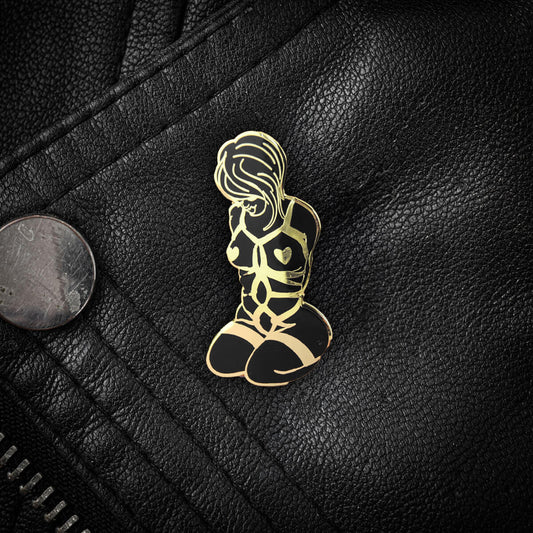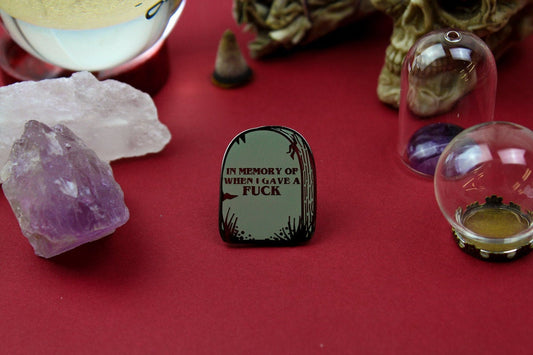
When Was Satanism Created?
Share
Satanism sparks curiosity, controversy, and plenty of questions. One of the biggest is, “When did it actually begin?” The answer isn’t straightforward. While accusations of Satanic worship date back centuries, modern Satanism as we know it is a more recent phenomenon.
Over time, Satanism has taken many forms. It ranges from symbolic atheistic movements like the Church of Satan to theistic practices that revere Satan as a deity. Each has its own timeline and influences. Understanding when Satanism started means looking at both history and how it’s been redefined in the modern era.
Early References to Satanic Worship
Satanic worship has a long history - at least in accusation. During the Middle Ages, people were often accused of worshipping Satan, especially during the witch trials. These claims were rarely based on evidence and were mostly tools for persecution. Anyone who defied religious or social norms risked being labelled as Satanic.
Myths of Satanic cults also appeared in Christian propaganda, painting pagans or dissenters as devil worshippers. These stories stoked fear and justified crackdowns on supposed heretics. However, there’s little proof that organised Satanic practices existed during these times.
What’s clear is that the concept of Satanic worship was used more as a weapon than a reality. The real roots of modern Satanism would come much later, as a deliberate response to these centuries of fear and superstition.

Photo by cottonbro studio
The Birth of Modern Satanism
Modern Satanism took shape in 1966 with the founding of the Church of Satan by Anton LaVey. This marked the first organised attempt to define Satanism as a belief system. Unlike the devil-worshipping stereotypes, LaVeyan Satanism was atheistic. Satan was used as a symbol of personal freedom, rebellion, and human empowerment.
LaVey’s philosophy focused on self-reliance and indulgence, rejecting traditional religious morality. Rituals were theatrical and symbolic, aimed at celebrating individuality rather than summoning supernatural forces. His Satanic Bible, published in 1969, laid out these principles and became the cornerstone of the movement.
For many, this was the turning point that made Satanism a recognised and structured ideology. It wasn’t about worshipping evil but rejecting societal norms. LaVey’s work redefined Satanism, separating it from historical myths and grounding it in a modern, philosophical context.
Theistic Satanism and Its Roots
While modern Satanism often leans towards atheism, theistic Satanism takes a different path. In this branch, Satan is viewed as a deity or spiritual force. Practitioners revere Satan as a figure of wisdom, power, or rebellion, often through rituals and prayers that reflect a personal connection to this entity.
Theistic Satanism draws inspiration from a mix of sources. Some ideas come from ancient pagan practices, while others are shaped by literary depictions of Satan as a tragic, misunderstood figure. John Milton’s *Paradise Lost* and other works gave Satan a rebellious and complex personality that resonated with those seeking a counterpoint to mainstream religion.
Unlike the Church of Satan, theistic groups lack a centralised structure. Beliefs and practices vary widely, making it harder to pin down an exact start date. However, the roots of theistic Satanism are deeply entwined with the cultural fascination with Satan as a symbol of defiance and individuality. This diversity has allowed it to evolve separately, adding another layer to the history of Satanism.

The Satanic Panic and Its Impact
The 1980s and 1990s saw a moral frenzy known as the Satanic Panic. Accusations of ritual abuse, secret cults, and devil worship swept across the United States and other countries, fuelled by sensationalist media and flawed investigations. However, most of these claims were later debunked as baseless.
The panic cast a long shadow over public perceptions of Satanism. It painted Satanists as dangerous criminals, even though there was little to no evidence linking Satanic groups to the crimes alleged during this period. Legitimate Satanic organisations, like the Church of Satan, were quick to distance themselves from these narratives, pointing out the lack of factual basis.
Despite the damage to its reputation, the Satanic Panic unintentionally brought more attention to Satanism. It pushed groups like the Church of Satan into the public eye, forcing a conversation about what Satanism really is. For better or worse, this period cemented Satanism in cultural memory, shaping the way it’s perceived to this day.
How Satanism Evolved Over Time
Since its emergence as a modern belief system, Satanism has grown and diversified. The Church of Satan, founded in 1966, laid the groundwork, but new groups and interpretations have emerged to challenge and expand its scope.
The Satanic Temple, founded in 2013, took Satanism in a more activist direction. While still atheistic, it uses Satanic imagery to promote social justice and protect secularism. Their campaigns, such as advocating for religious equality or defending reproductive rights, have brought a fresh perspective to modern Satanism.
Theistic Satanism has also evolved, with practitioners continuing to adapt their rituals and beliefs to reflect personal spirituality. Online communities have given these groups a platform to connect and share ideas, leading to more visibility and variation within the movement.
Today, Satanism is less about rigid doctrines and more about personal interpretation. Whether symbolic or spiritual, it remains a belief system centred on challenging norms, embracing individual freedom, and redefining what religion can look like.
Satanism, in its modern form, is a relatively recent creation, taking shape with the founding of the Church of Satan in 1966. However, its roots stretch back through history, shaped by myths, accusations, and cultural interpretations of the figure of Satan. From the witch trials to Paradise Lost, and from Anton LaVey to The Satanic Temple, the evolution of Satanism reflects changing attitudes towards religion, individuality, and rebellion.
Whether atheistic or theistic, Satanism has carved out a space as a belief system that challenges traditional ideas of faith. Its history is a mix of cultural fascination, moral panic, and philosophical reinvention. Understanding when Satanism was “created” means looking at both the myths that fuelled it and the modern movements that defined it. It may have been born in controversy, but today it stands as a recognised - and often misunderstood - expression of belief.













